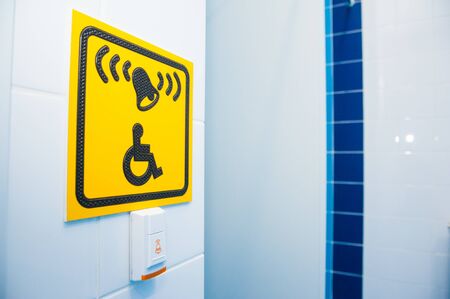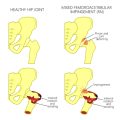Introduction to NHS Mobility Aid Support
For many individuals across the UK, mobility aids are not just equipment—they are essential tools that empower daily living, independence, and participation in the community. The National Health Service (NHS) recognises this fundamental need and plays a vital role in providing support to people who require assistance with mobility. Whether recovering from illness, managing a long-term condition, or facing the challenges of ageing, accessible mobility solutions can make a profound difference in quality of life. In this article, we offer an overview of how the NHS supports those in need of mobility aids and highlight the importance of ensuring everyone has access to the right equipment at the right time. Understanding what is available and how to access it can help British patients—and their loved ones—navigate this journey with greater confidence and peace of mind.
2. Types of Mobility Aids Available
When it comes to supporting independence and comfort, the NHS offers a range of mobility aids tailored to meet the diverse needs of British patients. Understanding what is available and the terminology commonly used in the UK can help you or your loved ones make informed choices about mobility support. Below, we describe some of the most frequently provided mobility aids through the NHS, considering both practical features and British preferences.
Common Mobility Aids Provided by the NHS
| Mobility Aid | Description | Typical NHS Provision | British Terminology & Preferences |
|---|---|---|---|
| Wheelchairs | Manual or powered chairs designed for individuals with limited or no ability to walk. They offer varying levels of support and adjustability. | Assessment-based provision; standard manual wheelchairs are most common, with power chairs available for those meeting specific criteria. | Often referred to as “NHS wheelchairs”; patients may be offered a voucher scheme for private purchase upgrades. |
| Walking Frames | Sturdy metal frames that provide stability when walking, available in wheeled (rollators) and non-wheeled styles. | Frequently supplied for short- or long-term use following assessment, especially after surgery or injury. | Known as “Zimmer frames” in everyday language; British users often favour lightweight, foldable models for ease of transport. |
| Walking Sticks & Canes | Simple aids offering extra balance and support, available in various materials and handle types. | Readily available; choice guided by user’s height, grip strength, and personal style preference. | The term “walking stick” is preferred over “cane” in the UK; wooden sticks are popular for their traditional look. |
| Mobility Scooters | Electric scooters intended for outdoor use, suitable for individuals who can sit upright but have difficulty walking distances. | NHS provision is rare; more commonly privately purchased or accessed through local authority schemes. | Referred to as “mobility scooters”; valued for shopping trips and community outings—users must comply with local regulations regarding pavement use. |
| Tilt-in-Space Chairs & Specialist Seating | Bespoke seating solutions providing posture support and pressure relief for individuals with complex needs. | Provided after specialist assessment, often in hospital or long-term care settings. | Typically known as “specialist seating” within NHS services; prioritised for those at risk of pressure sores or postural issues. |
Selecting the Right Aid: What Matters Most?
The right mobility aid is one that suits an individual’s lifestyle, medical condition, and home environment. Within the NHS system, a thorough assessment by a physiotherapist or occupational therapist ensures suitability. British patients often value discretion and ease of use—foldable frames fit neatly into smaller homes or cars, while lightweight wheelchairs are favoured for easy manoeuvrability on public transport. It’s also important to note that in many parts of the UK, there are community equipment loan services managed by local authorities working alongside the NHS to further widen access to these essential aids.

3. Eligibility and Assessment Process
Understanding whether you or your loved one is eligible for NHS-provided mobility aids is an important first step in accessing the support you need. Generally, mobility aids such as wheelchairs, walking frames, and other assistive devices are available to individuals who have a permanent or long-term medical condition that significantly affects their mobility. To begin the process, patients usually consult their GP, who will assess the need and make a referral if appropriate. In some cases, referrals may also come from hospital consultants or community health teams.
Once referred, a specialist assessment is typically arranged through local NHS wheelchair services or community equipment services. During this assessment, trained professionals—often occupational therapists or physiotherapists—will evaluate your specific needs, taking into account your home environment, daily routines, and any ongoing rehabilitation goals. This ensures that the aid provided is not only suitable but also safe and comfortable for regular use.
It’s important to note that eligibility criteria can vary slightly depending on your local NHS Trust and the type of equipment required. Some aids may be loaned for temporary use following surgery or injury, while others are intended for longer-term support. The key is open communication with your healthcare team, who will guide you through every step of the process and help ensure that your individual circumstances are fully considered.
4. Application and Waiting Times
Navigating the application process for mobility aids through the NHS can feel daunting, but understanding each step helps set realistic expectations. Here’s what British patients should know about applying, typical waiting times, and useful tips for making the process smoother.
What to Expect During the Application Process
To begin, most patients are referred by their GP or a hospital consultant for an assessment with a specialist service (such as a physiotherapist or occupational therapist). This assessment determines your specific needs and which mobility aid is appropriate. The process generally follows these steps:
| Step | Description |
|---|---|
| 1. Referral | Your GP or consultant refers you to a local NHS wheelchair or equipment service. |
| 2. Assessment | A qualified professional assesses your needs, often at home or in a clinic. |
| 3. Recommendation | The specialist recommends the most suitable mobility aid. |
| 4. Approval & Ordering | If approved, the NHS arranges provision or ordering of the equipment. |
| 5. Delivery & Fitting | The aid is delivered; fitting and adjustments are made as needed. |
Typical Waiting Times
Waiting times can vary depending on your location and the demand on local services. Below is a general guide:
| Stage | Estimated Waiting Time |
|---|---|
| Referral to Assessment | 2–8 weeks (varies by region and urgency) |
| Assessment to Delivery | 2–12 weeks (depending on stock and customisation) |
| Urgent Cases | May be prioritised and completed more quickly |
Tips for Navigating the NHS System in the UK
- Stay in touch: Maintain regular contact with your GP or specialist to monitor progress.
- Keep records: Document all communication, appointment dates, and names of professionals involved.
- Ask questions: Don’t hesitate to ask for updates or clarification during any stage of the process.
- Liaise with support groups: Local charities such as Scope or Age UK often provide helpful guidance and advocacy.
- Prepare for reviews: Some equipment is provided on loan and will be reviewed periodically—make note of review dates and feedback any changes in your needs.
Navigating the NHS system can take time, but by understanding each step and keeping organised, you can feel more confident throughout your journey toward receiving the right mobility aid.
5. Ongoing Support, Maintenance, and Replacements
After receiving a mobility aid through the NHS, ongoing support is an essential part of ensuring your safety and independence. The NHS recognises that mobility aids are not simply handed over and forgotten; rather, they require regular maintenance and sometimes even replacement as your needs change or as equipment wears out. Follow-up care is typically arranged by the local NHS wheelchair or mobility service, who may periodically review your situation to ensure your equipment remains suitable and in good working order.
If you encounter any issues—such as damage or malfunction—most NHS-provided mobility aids come with access to repair services. In many areas, there are dedicated teams or contractors who specialise in fixing NHS-issued wheelchairs and other mobility devices. It’s important to contact your local service centre promptly if repairs are needed; they can often offer advice over the phone, arrange for a technician to visit your home, or organise collection and return of the equipment. Always keep the contact information provided at the time of issue handy for these situations.
Replacement policies vary depending on your local NHS trust’s guidelines and the type of aid you’ve been given. Generally, replacements are considered when the device is no longer fit for purpose due to wear and tear, or if your clinical needs have changed significantly. Your occupational therapist or physiotherapist will usually assess you again before a new device is issued. It’s worth noting that deliberate damage or loss may not always be covered, so it’s important to care for your equipment as best you can.
This ongoing relationship with your NHS mobility service means you are never left alone with concerns about your aid. If you move house or experience significant changes in health, let your service know as soon as possible—they will help adapt your support accordingly. With gentle guidance and consistent follow-up, British patients can feel reassured that their mobility needs will continue to be met with understanding and professionalism throughout their journey.
6. Options Beyond NHS Provision
While the NHS strives to support every patient’s mobility needs, there are times when its provision may not fully meet specific requirements or preferences. In these cases, it can be reassuring to know that other avenues exist across the UK, offering additional assistance and choice.
A Gentle Look at Alternative Resources
For those who need more tailored equipment, or faster access, several resources can complement what is available through the NHS. Exploring these options can empower you or your loved one to find solutions that best fit your lifestyle and circumstances.
Charities and Voluntary Organisations
Many British charities, such as the British Red Cross or Age UK, offer short-term loans or even long-term provision of mobility aids. These organisations often provide not only equipment but also emotional support and advice tailored to your individual journey. Some local disability groups may also have resources or grants to help with specific mobility needs.
Local Council Support
Your local council has a duty of care and may offer additional services beyond the NHS. This might include home adaptations, community equipment services, or further assessments by occupational therapists. Contacting your council directly or visiting their website can open up new possibilities for support and practical help close to home.
Private Suppliers
If you prefer a wider choice of mobility aids or require something not covered by public provision, private suppliers can be an option. While this does involve personal expense, many suppliers across the UK offer expert guidance, assessments, and aftercare. Always ensure you choose a reputable provider—look for members of industry bodies such as the British Healthcare Trades Association (BHTA), which uphold high standards of service.
Caring Support Every Step of the Way
Navigating mobility aid options can feel daunting, but remember that you are not alone. Whether seeking NHS support or exploring alternatives, gentle advice and practical assistance are available throughout Britain’s health and social care network. Taking time to consider all resources ensures you find comfort, independence, and dignity on your journey towards better mobility.


